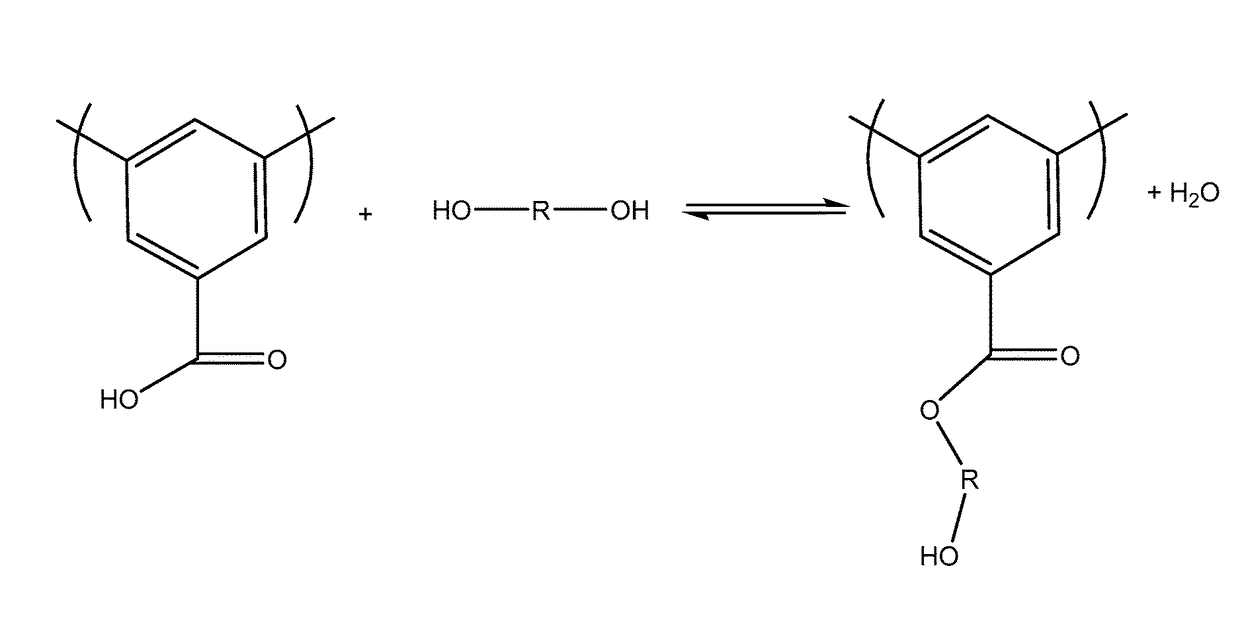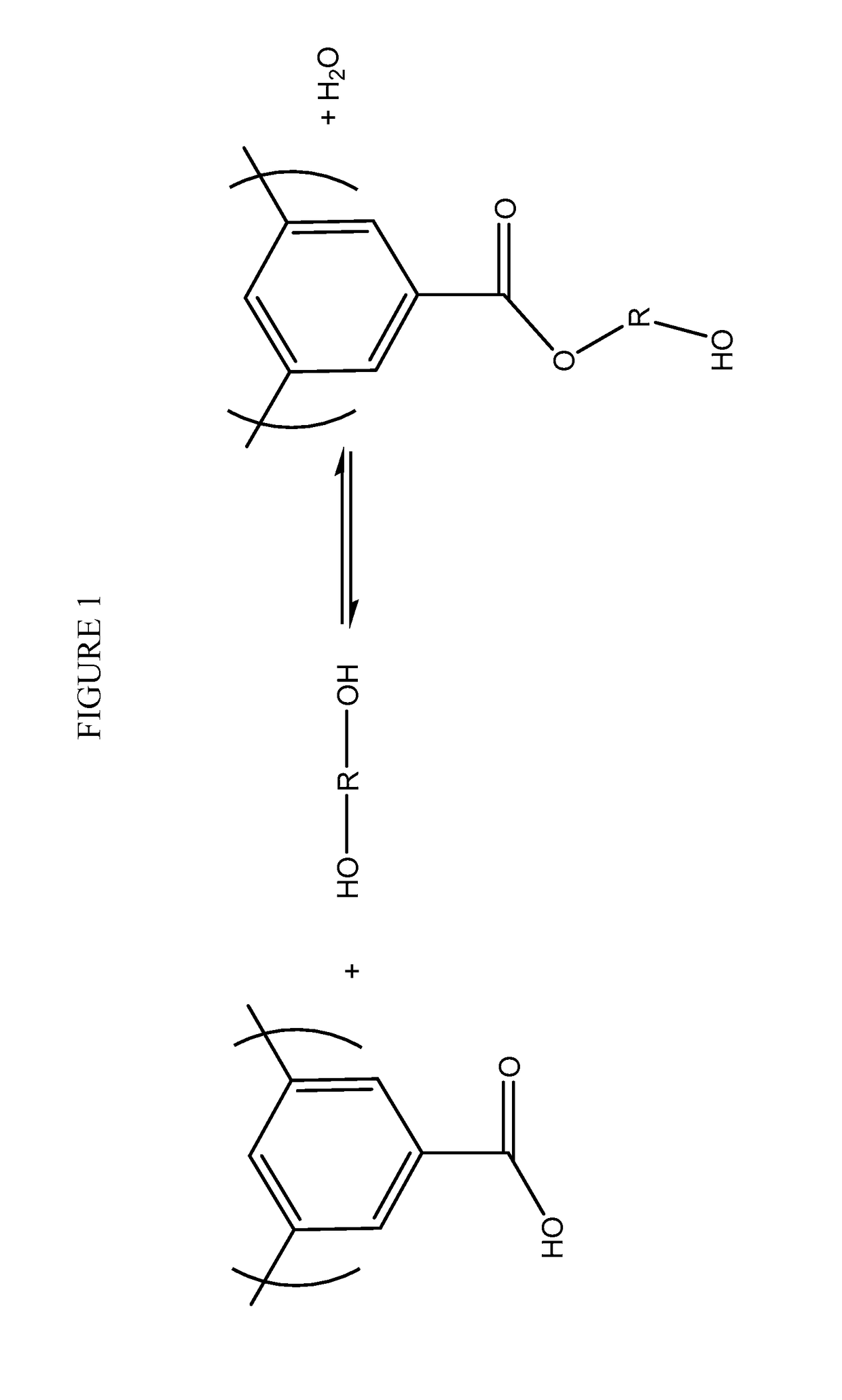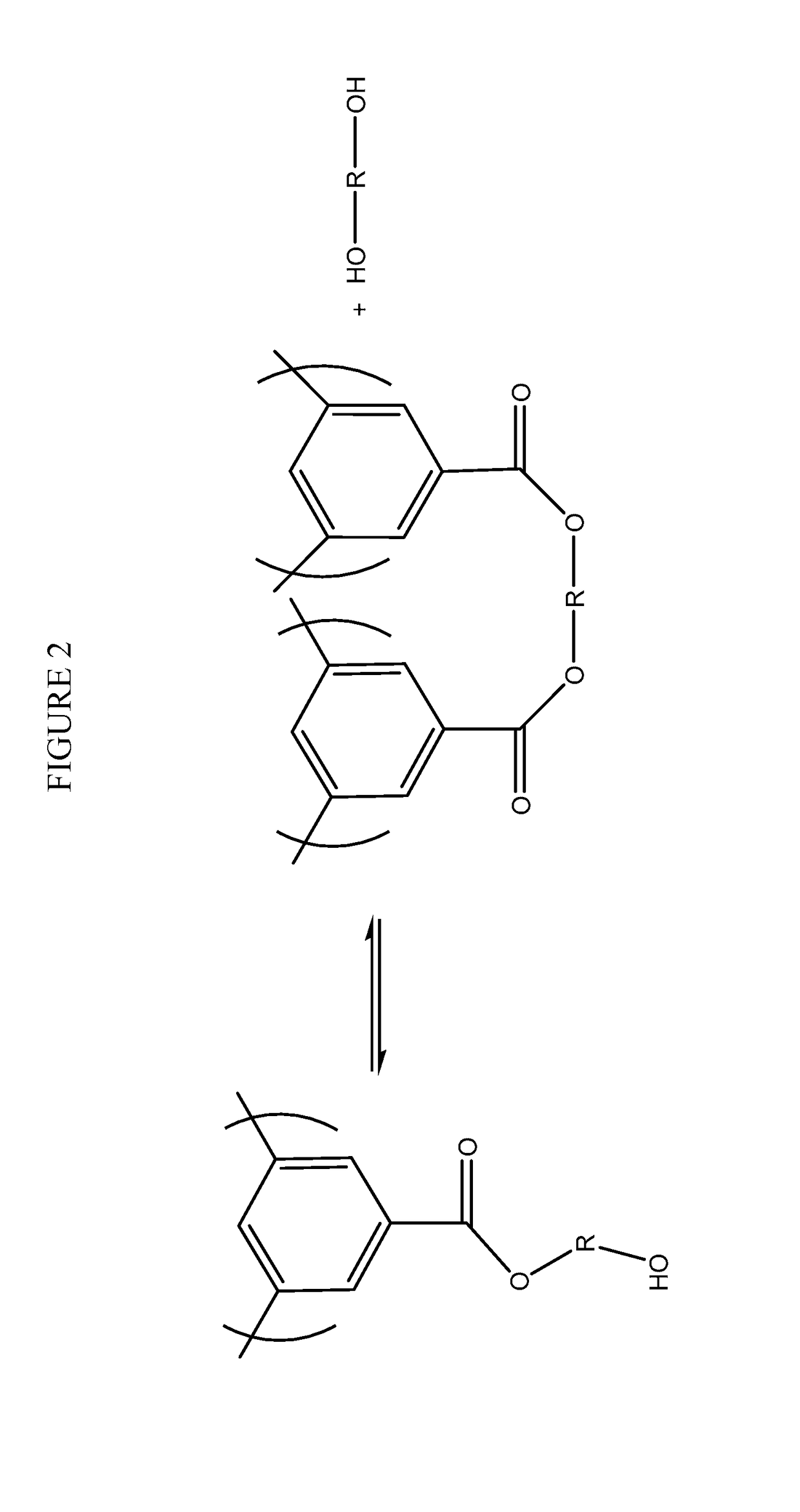Methods of making crosslinked membranes utilizing an inert gas atmosphere
a gas atmosphere and cross-linked membrane technology, applied in the direction of membranes, separation processes, membranes, etc., can solve the problems of large drop in permeance, and achieve the effect of improving permean
- Summary
- Abstract
- Description
- Claims
- Application Information
AI Technical Summary
Benefits of technology
Problems solved by technology
Method used
Image
Examples
example 1
rification Under Vacuum Atmosphere
[0154]The uncrosslinked hollow fiber was formed using a spinning solution (dope) containing 28 wt % monoesterified polyimide (i.e. 6FDA dianhydride (4,4′[Hexafluoroisopropylidene] diphthalic anhydride) and a 3:2 ratio of DAM (2,4,6-trimethyl-1,3 phenylene diamine) to DABA (diamino benzoic acid) diamines 38.5 wt % N-methyl-2-pyrilodinone (NMP), 15.1 wt % ethanol, 15.4% tetrahydrofuran (THF) and a viscosity enhancing salt (LiNO3) of 3 wt % was mixed to form a homogenous solution. The dope was rolled in a sealed container for 7 days to ensure complete mixing. The dope was then allowed to degas for 24 hours before being poured into an ISCO® syringe pump, where it was again degassed for 48 hours. The dope was extruded from an annular spinneret at 200 mL / hr through an air gap into a quench bath filled with deionized water and taken up on a rotating drum at between 50 m / min. A solution consisting of 83% NMP with 17% DI water was used as the bore fluid. The...
PUM
| Property | Measurement | Unit |
|---|---|---|
| partial pressure | aaaaa | aaaaa |
| partial pressure | aaaaa | aaaaa |
| temperature | aaaaa | aaaaa |
Abstract
Description
Claims
Application Information
 Login to View More
Login to View More - R&D
- Intellectual Property
- Life Sciences
- Materials
- Tech Scout
- Unparalleled Data Quality
- Higher Quality Content
- 60% Fewer Hallucinations
Browse by: Latest US Patents, China's latest patents, Technical Efficacy Thesaurus, Application Domain, Technology Topic, Popular Technical Reports.
© 2025 PatSnap. All rights reserved.Legal|Privacy policy|Modern Slavery Act Transparency Statement|Sitemap|About US| Contact US: help@patsnap.com



